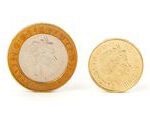Unraveling the Benefits of Gold IRAs: A Comprehensive Guide
In the world of financial planning and investment, the Gold IRA stands out as a unique and compelling option. As researchers and informed investors seek ways to secure their financial future, the Gold IRA has garnered significant attention. This comprehensive guide will delve into the intricacies of Gold IRAs, exploring their benefits, regulations, investment options, and potential risks. Whether you are new to the concept or a seasoned investor, read on to discover the potential advantages of incorporating gold into your retirement portfolio.
I. Introduction
A. Explanation of a Gold IRA
A Gold IRA, also known as a Precious Metals IRA, is a specialized type of Individual Retirement Account designed to allow investors to allocate a portion of their retirement savings to investments in precious metals, primarily gold. This unique approach combines the advantages of traditional retirement accounts with the potential benefits of investing in gold.
B. The Allure of Gold as an Investment
Gold has held a significant place in human history as a symbol of wealth and stability. Its intrinsic value, limited supply, and historical performance as a hedge against economic uncertainty make it an attractive investment choice.
C. Overview of the Article’s Content
This guide aims to provide a comprehensive understanding of Gold IRAs. We will cover topics ranging from the fundamentals of Gold IRAs to the various types available, eligibility criteria, setting up your account, investment options, storage and security considerations, portfolio management, tax implications, and an exploration of potential risks and rewards. Additionally, we will address common questions through a FAQ section and offer valuable tips for successful Gold IRA investing.
II. What is a Gold IRA?
A. Definition and Purpose of a Gold IRA
A Gold IRA is a retirement savings account that allows individuals to invest in physical gold or other precious metals. The primary purpose is to provide investors with exposure to the potential benefits of gold as an asset class while enjoying the tax advantages associated with traditional IRAs.
B. Distinctive Features Compared to Traditional IRAs
Gold IRAs differ from traditional IRAs primarily in their investment options. While traditional IRAs typically focus on stocks, bonds, and mutual funds, Gold IRAs allow for investments in precious metals like gold, silver, platinum, and palladium.
C. Historical Context of Gold as a Financial Asset
Gold’s long history as a store of value and a hedge against economic turmoil has contributed to its enduring appeal as an investment. Understanding this historical context can provide valuable insights into its potential role in a diversified portfolio.
III. Types of Gold IRAs
A. Self-directed Gold IRA
A self-directed Gold IRA offers the most flexibility when it comes to choosing investments. Investors have the freedom to select their precious metal assets, making it a popular choice for those who wish to have more control over their portfolio.
B. Traditional vs. Roth Gold IRAs
Traditional Gold IRAs allow for tax-deductible contributions with taxes paid upon withdrawal in retirement, while Roth Gold IRAs permit after-tax contributions and tax-free withdrawals under certain conditions. Choosing the right type depends on individual financial goals and tax considerations.
C. Advantages and Disadvantages of Each Type
Each type of Gold IRA has its own set of advantages and disadvantages. Understanding these differences is crucial for aligning your retirement strategy with your specific needs and objectives.
IV. Eligibility and Requirements
A. Who Can Open a Gold IRA?
Generally, anyone with earned income can open a Gold IRA, provided they meet certain criteria. However, it’s essential to understand the rules regarding contributions, especially for Traditional and Roth IRAs.
B. IRS Rules and Regulations for Gold IRAs
The IRS has established clear rules and regulations governing Gold IRAs. Adhering to these guidelines is critical to ensure compliance and avoid penalties.
C. Eligible Forms of Gold Investments
When investing in a Gold IRA, you have several options, including physical gold (coins, bars, bullion), gold ETFs (Exchange-Traded Funds), and gold mining stocks. Understanding the eligibility and requirements for each form of investment is essential.
V. Setting Up Your Gold IRA
A. Choosing a Custodian or Trustee
Selecting a reputable custodian or trustee is a crucial step in managing your Gold IRA. They will play a vital role in facilitating transactions, reporting, and ensuring compliance with IRS regulations.
B. Opening a Self-directed IRA
To invest in gold within an IRA, you must first open a self-directed IRA. This process involves selecting a custodian or trustee and completing the necessary paperwork.
C. Funding Your Gold IRA
There are several ways to fund your Gold IRA, including contributions, rollovers, and transfers from existing retirement accounts. Understanding these funding options can help you kickstart your investment journey.
D. Transferring or Rolling Over Existing Retirement Funds
If you already have existing retirement accounts, you can transfer or roll over funds into your new Gold IRA. This consolidation can simplify your retirement planning and provide a diversified investment portfolio.
VI. Investing in Gold Within Your IRA
A. Options for Acquiring Gold
-
Physical Gold: This includes gold coins, bars, and bullion. Understanding the specific IRS requirements for purity and weight is crucial when considering physical gold investments.
-
Gold ETFs: Exchange-Traded Funds that track the price of gold. They offer a convenient and cost-effective way to gain exposure to the gold market without the need for physical storage.
-
Gold Mining Stocks: These are shares in companies engaged in gold mining or exploration. Investing in gold mining stocks provides indirect exposure to the gold market.
B. Factors to Consider When Selecting Gold Investments
When choosing your gold investments, consider factors such as liquidity, risk tolerance, and your overall investment strategy. Each type of gold investment has its unique characteristics.
C. Diversifying Your Gold Holdings
Diversification within your Gold IRA can further reduce risk. Explore the potential benefits of holding a mix of physical gold, gold ETFs, and gold mining stocks to create a balanced and resilient portfolio.
VII. Storage and Security
A. Secure Storage Options for Physical Gold
When investing in physical gold, secure storage is paramount. Options include bank vaults, private depositories, and safe deposit boxes. Evaluating the pros and cons of each storage option is essential.
B. Insurance Considerations
Consider insuring your physical gold holdings to safeguard your investment against potential loss or damage. Understanding insurance policies and coverage limits is crucial.
C. Custodian’s Role in Safeguarding Your Gold
Your chosen custodian or trustee is responsible for ensuring the safe storage and security of your gold investments. Building trust and effective communication with your custodian is essential in this partnership.
VIII. Managing Your Gold IRA
A. Monitoring Gold Market Trends
Stay informed about gold market trends by regularly reviewing market data, economic indicators, and geopolitical events that can impact gold prices. Staying well-informed is key to making strategic investment decisions.
B. Periodic Portfolio Reviews and Adjustments
As your financial goals evolve and market conditions change, periodically review and adjust your Gold IRA portfolio. Adapting your investment strategy to align with your objectives is essential for long-term success.
C. Diversification Strategies Within Your Gold IRA
Diversifying your gold holdings within your Gold IRA can help spread risk and enhance potential returns. Explore different strategies for diversification, considering factors like asset allocation and risk tolerance.
















